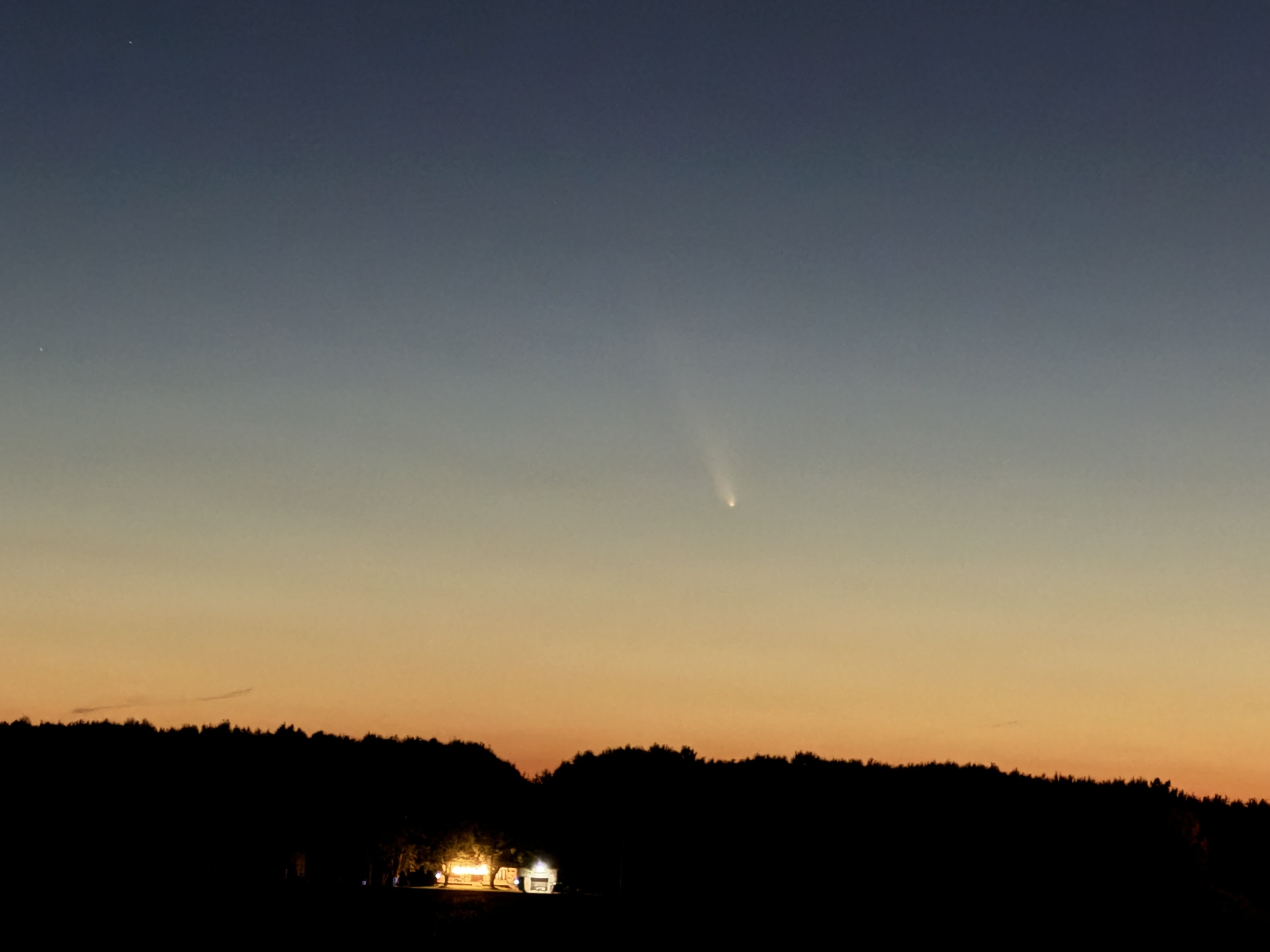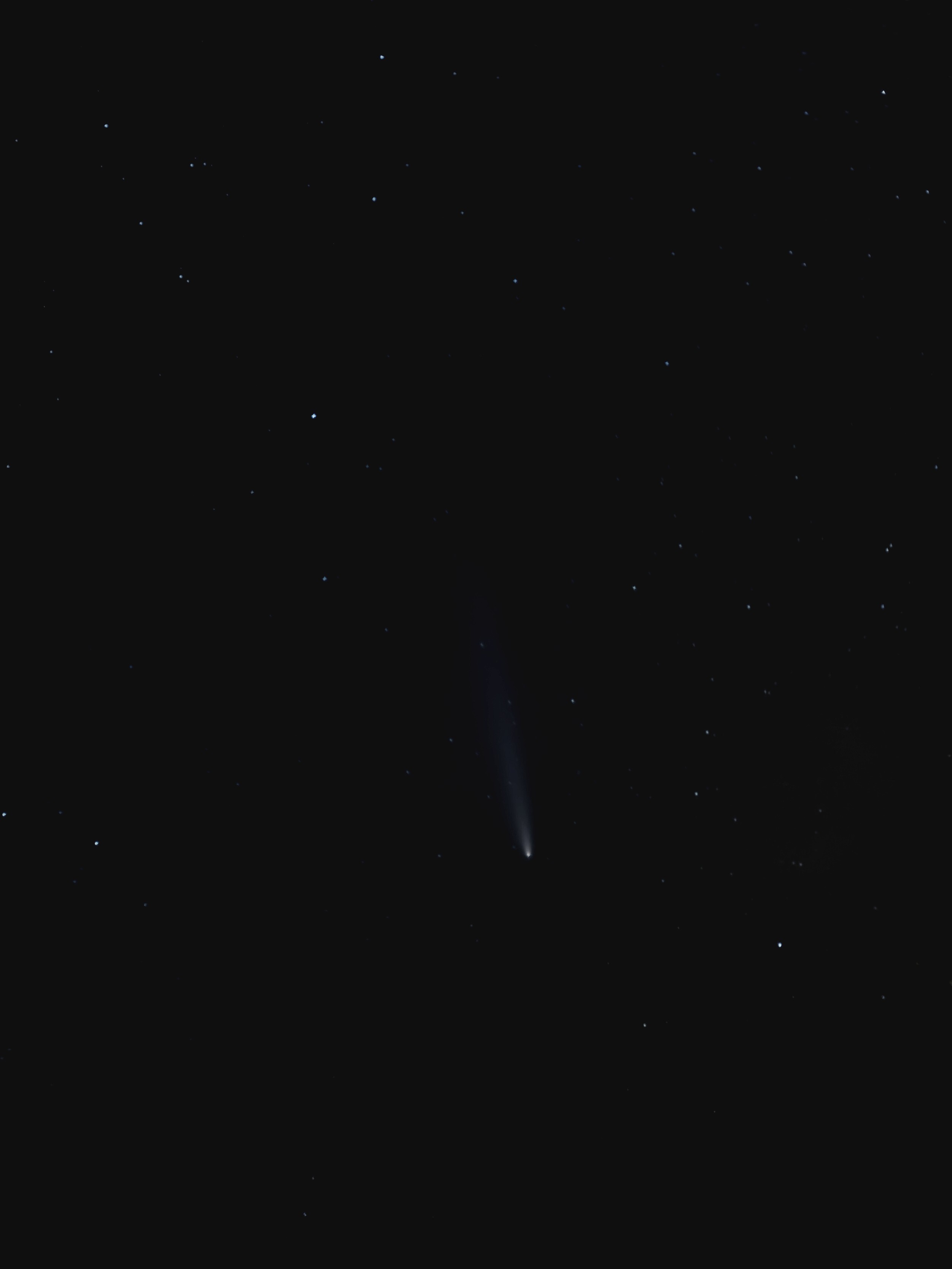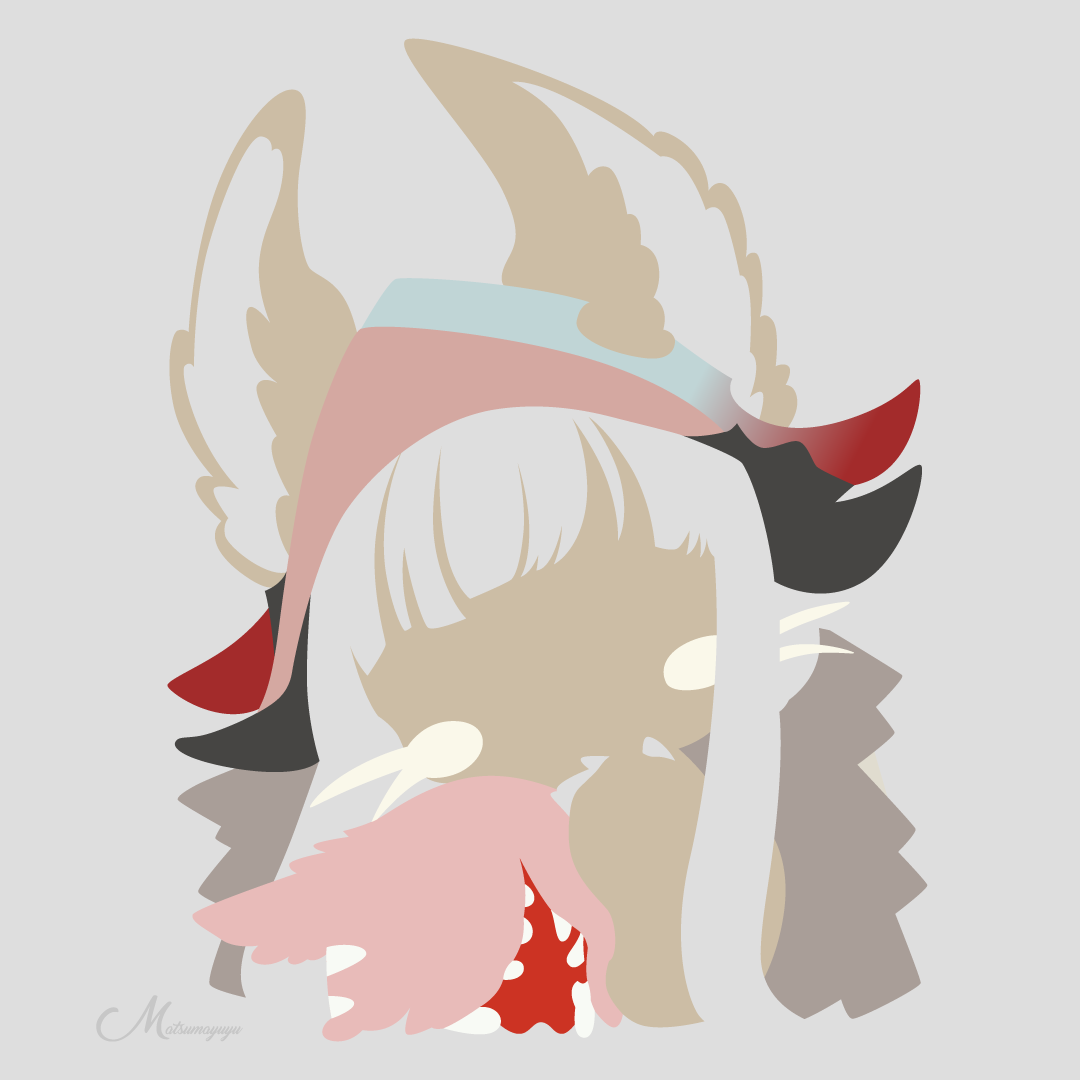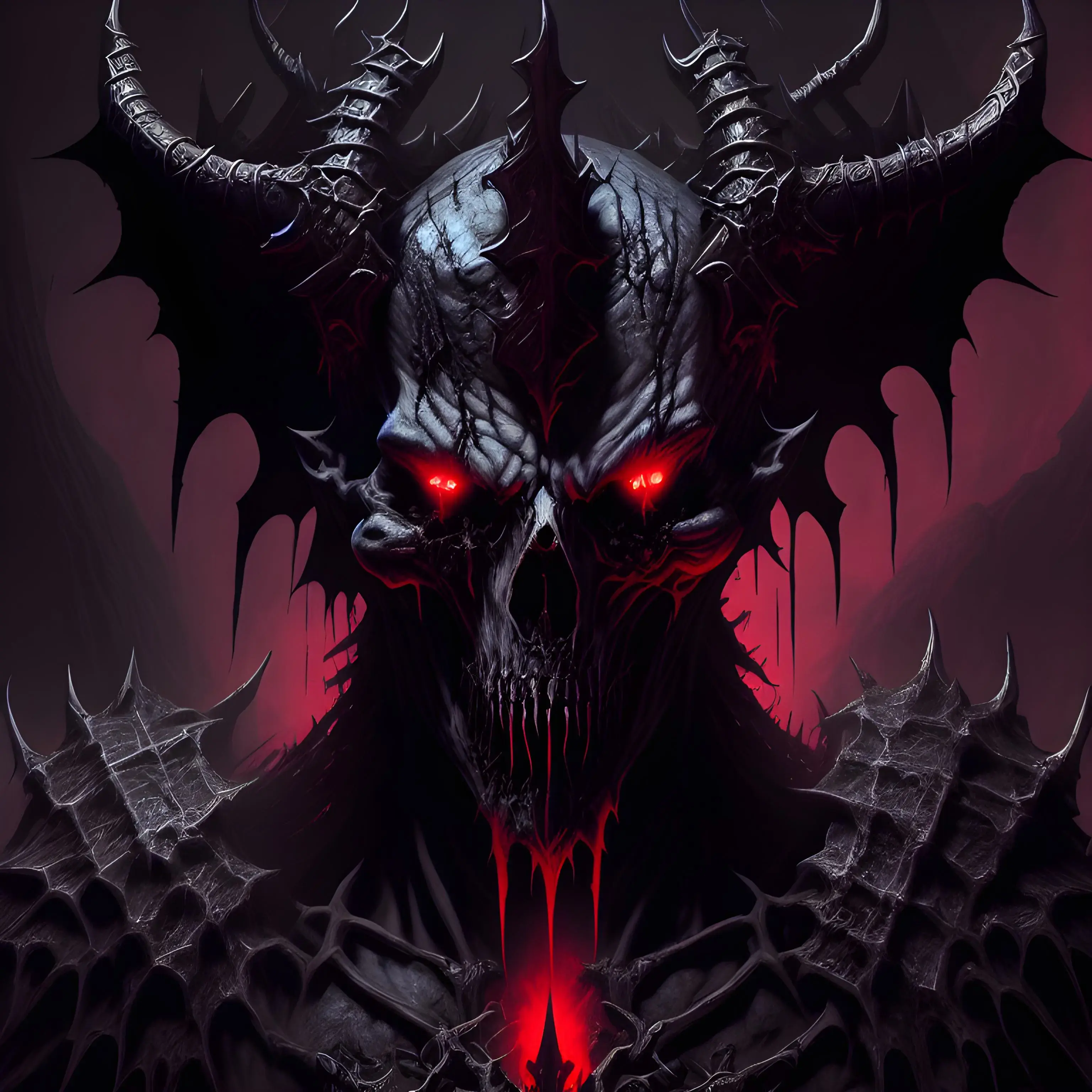We got extremely lucky and got a tiny window of cloudless sky in an never ending sequence of cloudy nights. Also the conditions were a nightmare with severe light pollution and lights shining directly at our equipment.
- Samyang 135mm f2.0
- Fuji X-T5
- 158 x 5s
- ISO 125
- @f2.8
And maybe somebody here can explain to us what the ionized gas is that 'shoots out‘ in front of the comet?
Also do the colours seem to be correct? We tried our best at background extraction and maintaining the true colour, but the raw data was of poor quality. From images of other comets the dust tails normally seems to have a yellow/orange colour and only the plasma tail is blue.
Edit: found the answer to the Anti-tail. It shows the trail of dust were the comet has traveled, which appears to come out at the opposing side because of earths angle relative to the comet and sun.
Yours is beautiful.
This was all I could get with long exposure on my phone when the sky was dark enough but the comet had not yet set. It’s flat here, so this was the clearest view of the horizon and (despite those lights) the darkest area I could find. To the naked eye, it was a smudge. The bright spot only shows in the pic.

Your image looks not to bad either. On my phone the comet looked the same like yours.
I’m new to astro, is it necessary to stack so much photos to see this comet? Whats the difference between single shot and stacked in this case? Thanks!
The comet is also visible on one single exposure as it is very bright. It was also visible to the naked eye. But stacking reveals even more details because it improves the signal to noise ratio. Also stacking helps removing unwanted objects like satellite trails, planes or moving clouds.
I see. Thanks for the answer!

This I took holding an iPhone on a picnic table. See the difference? All the details that OP managed to get?
That’s extremely good for a phone camera I assume. I did try with my own camera a few days ago. I originally asked because weather conditions in my area wasn’t great for a while, and I don’t know what settings to start off with. I did my best at stacking and editing them with Affinity, although not the greatest, I did manage to capture something haha.

Edit: camera specs
Fujifilm X-S10 + Sigma 18-50
ISO640, F/2.8, 5 sec x 140It‘s hard to tell from your image, bit it appears you can even get a bit more details if you register your lights onto the comet itself and then stack all the images. I used Siril for the two step registration process.
But nice image nonetheless!
Thanks! I did try with DSS afterwards to only slightly better results? I’ll give Siril a try too. What do you mean by “register the light to the comet”? Is it a Siril specific setting?
I do not have much experience with DSS, as far as I know the result should be very similar. „Lights“ is the term for a single exposure. The technique is basically the same no matter which software you use.
But if you have Siril specific questions feel free to drop any questions :)
Oh okay, so you mean the light frames. Got it.
Though, I still don’t understand what you mean by “registering the light frames to the comet itself”. I have 140 frames of the comet (albeit not in the same position since I don’t have an astro tripod), and I imported them all into the light frame stack. That’s what I’m supposed to do, or do you mean a more specific step than that?Thanks again!
Ah ok, so I assumed you registered all your light frames onto your stars as your stars look very sharp. And that’s the normal way for every astro image you would normally do. A comet however moves so fast that its position changes even in the short time frame were you took the images.
So after registering all the images with the stars pattern you want to make a second registration were you mark the position of the comet on the first frame and on the last frame. With that now all images are aligned onto the comet and now the stars appear to move in the background. As your stars look so sharp I assumed you didn’t make the second registration. In DSS there is a comet mode for that but I haven’t worked with that so I can’t tell you about the workflow with that program.
Hope that helped in any way!
Dope
A set of trees are in the say literally right now :( We went on top of a building but only a couple of stories up.
Awesome photo. I shall live through all of your photos.
Lets see what the next days will bring. As the comet rises higher maybe it will be even more visible.
Love the colors!
Cool thank you!
I’m going to take a wild guess here, but if you look at your first frame and last frame, does the comet appear to have moved backwards? I’m wondering if the strange plasma you see in the front is just an artifact of the stacked results. Stacking comets can be a bit tricky due to their movement.
That being said, absolutely amazing shot!
Thanks for answering! Yes the comet moved quite a bit, but I stacked two images. One for the stars and one for the comet were I registered the images onto the comet itself. So the stream seems to be a real feature of the comet.





